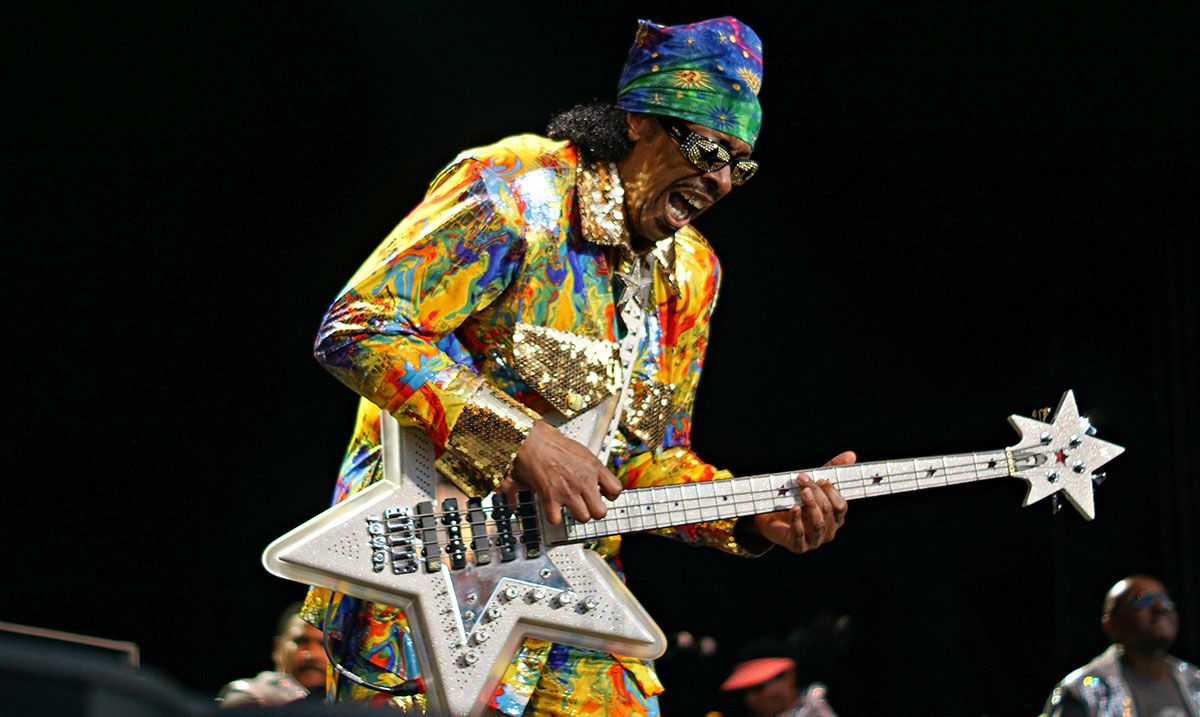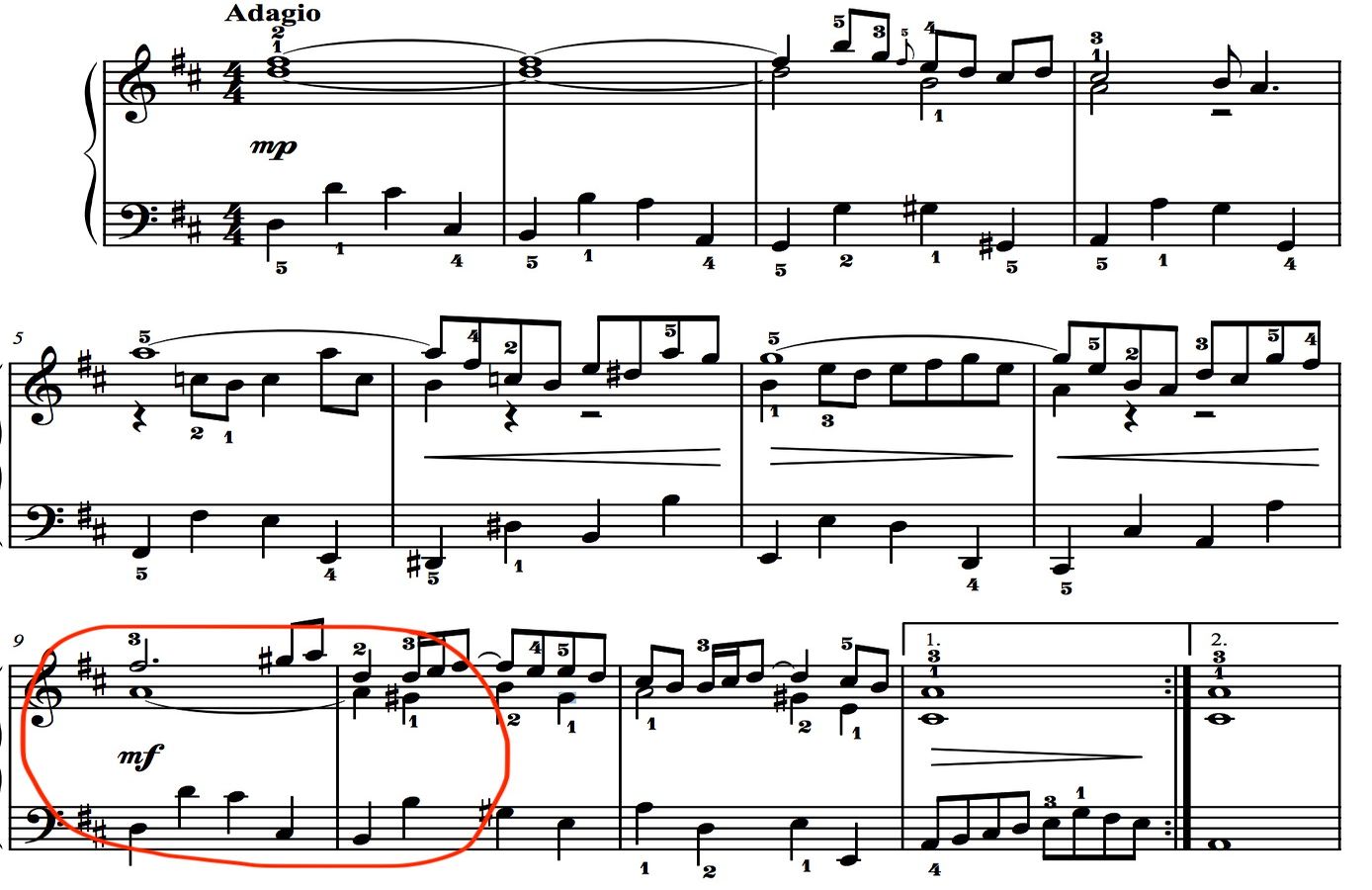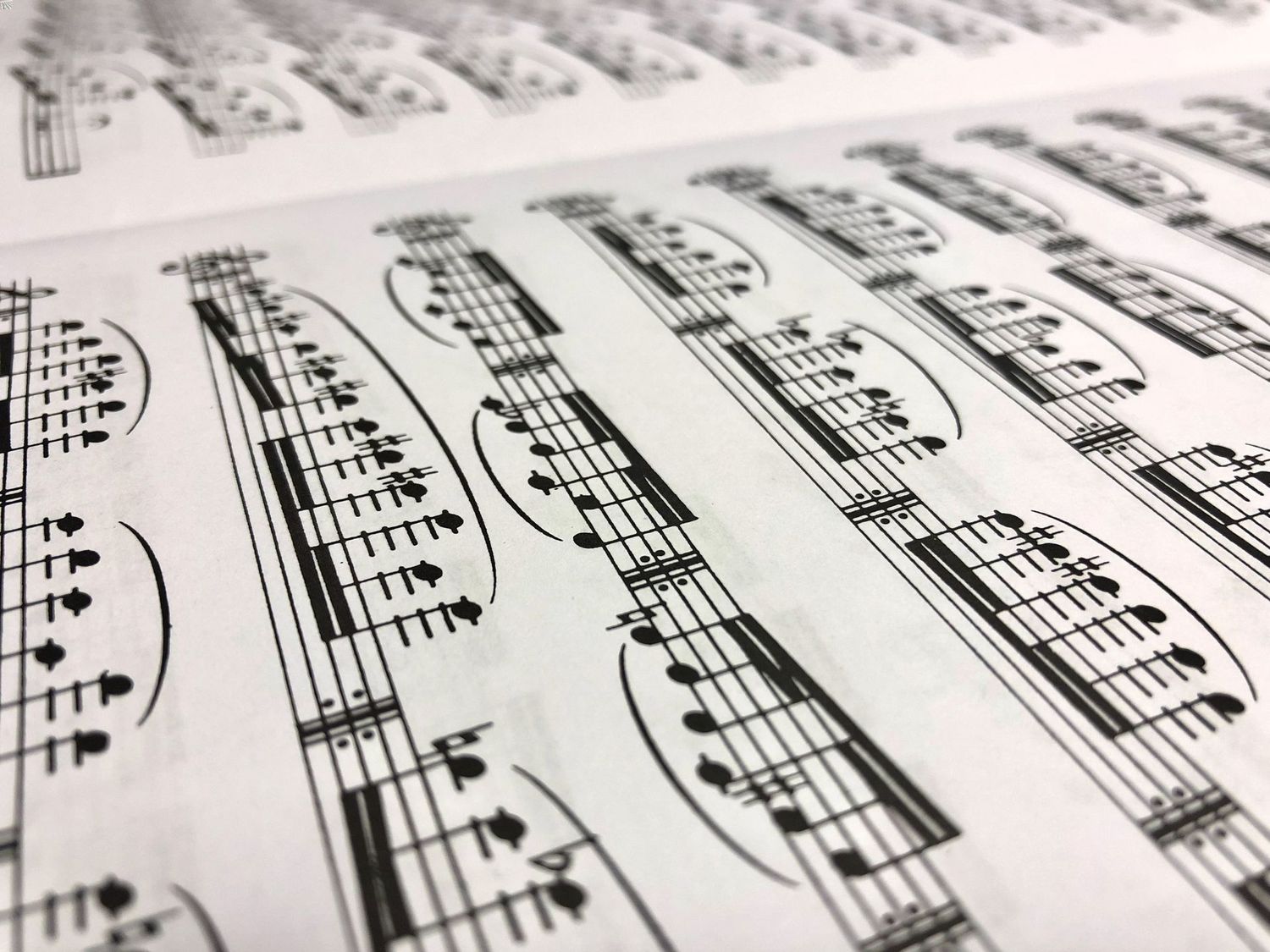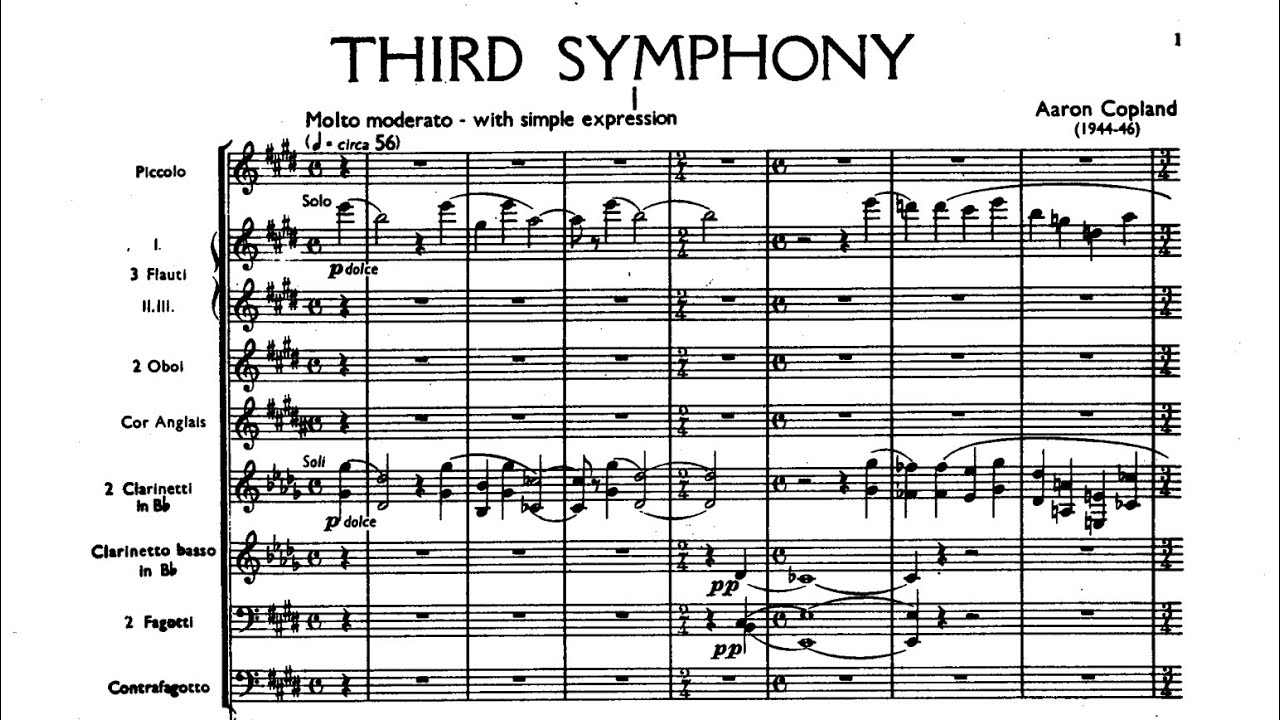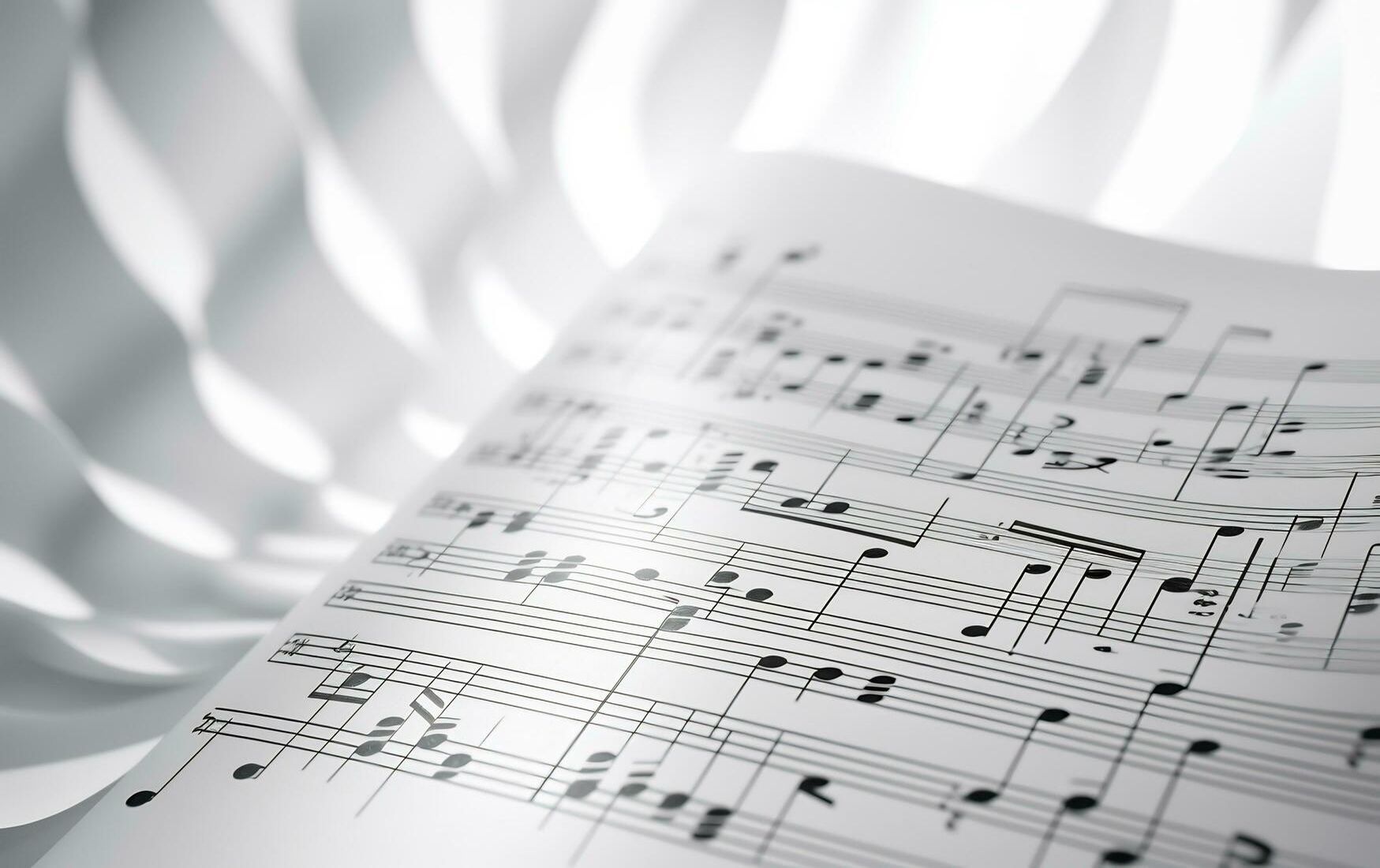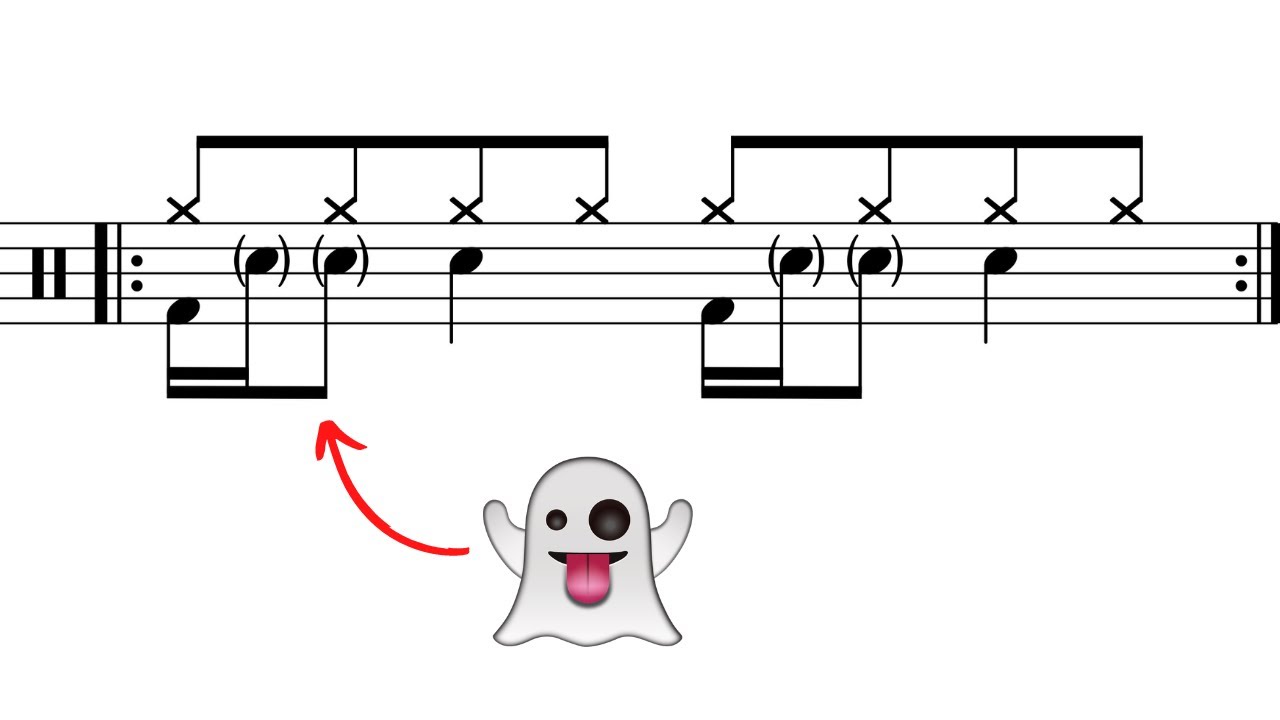Home>Events & Info>Note>What Are The Third Note Harmonies For Music Keys


Note
What Are The Third Note Harmonies For Music Keys
Published: December 5, 2023
Learn about the harmonies of third notes in different music keys and improve your understanding of note relationships.
(Many of the links in this article redirect to a specific reviewed product. Your purchase of these products through affiliate links helps to generate commission for AudioLover.com, at no extra cost. Learn more)
Table of Contents
Introduction
Music is a universal language that has the power to evoke emotions and captivate audiences. Behind every great piece of music lies a foundation of harmonies, which are created by combining individual notes in specific ways. One of the fundamental aspects of harmony is understanding the relationships between different notes within a particular key.
In this article, we will explore the concept of third note harmonies for various music keys. Understanding these harmonies will not only enhance your understanding of music theory but also give you a clearer insight into the structure and composition of different melodies.
Each major key consists of a series of notes, commonly referred to as a scale. When we talk about third note harmonies, we are referring to the chords that are built on the notes within that scale. These chords play a crucial role in establishing the tonality and emotional character of a piece of music.
By exploring the third note harmonies for different music keys, we can gain a deeper understanding of the chord progressions commonly used in diverse musical genres. Let’s delve into the harmonies of various major keys and discover the unique characteristics they bring to the world of music.
C Major Key
The C Major key is often considered one of the foundational keys in music. It consists of the following notes: C, D, E, F, G, A, and B. Understanding the third note harmonies within this key is essential for musicians and composers alike.
The first chord in the C Major key is the tonic chord, built on the first note of the scale, which is C. This chord is known as the C Major chord and is comprised of the notes C, E, and G.
The second chord in the C Major key is the supertonic chord, built on the second note of the scale, which is D. This chord is known as the D minor chord and is made up of the notes D, F, and A.
The third chord in the C Major key is the mediant chord, built on the third note of the scale, which is E. This chord is known as the E minor chord and consists of the notes E, G, and B.
The fourth chord in the C Major key is the subdominant chord, built on the fourth note of the scale, which is F. This chord is known as the F Major chord and is comprised of the notes F, A, and C.
The fifth chord in the C Major key is the dominant chord, built on the fifth note of the scale, which is G. This chord is known as the G Major chord and consists of the notes G, B, and D.
The sixth chord in the C Major key is the submediant chord, built on the sixth note of the scale, which is A. This chord is known as the A minor chord and is made up of the notes A, C, and E.
The seventh chord in the C Major key is the leading tone chord, built on the seventh note of the scale, which is B. This chord is known as the B diminished chord and consists of the notes B, D, and F.
These third note harmonies in the C Major key provide a rich and versatile palette for musicians to create beautiful melodies and chord progressions. Whether it’s a joyful and uplifting composition or a melancholic and introspective piece, the harmonies within the C Major key offer an abundance of possibilities.
C# Major Key
The C# Major key, also known as Db Major, is a key that can be both challenging and rewarding to work with. It includes the following notes: C#, D#, E#, F#, G#, A#, and B#.
The first chord in the C# Major key is the tonic chord, built on the first note of the scale, which is C#. This chord is known as the C# Major chord and is composed of the notes C#, E#, and G#.
The second chord in the C# Major key is the supertonic chord, built on the second note of the scale, which is D#. This chord is known as the D# diminished chord and consists of the notes D#, F#, and A.
The third chord in the C# Major key is the mediant chord, built on the third note of the scale, which is E#. This chord is known as the E# diminished chord and is made up of the notes E#, G#, and B#.
The fourth chord in the C# Major key is the subdominant chord, built on the fourth note of the scale, which is F#. This chord is known as the F# Major chord and consists of the notes F#, A#, and C#.
The fifth chord in the C# Major key is the dominant chord, built on the fifth note of the scale, which is G#. This chord is known as the G# Major chord and is composed of the notes G#, B#, and D#.
The sixth chord in the C# Major key is the submediant chord, built on the sixth note of the scale, which is A#. This chord is known as the A# diminished chord and consists of the notes A#, C#, and E#.
The seventh chord in the C# Major key is the leading tone chord, built on the seventh note of the scale, which is B#. This chord is known as the B# diminished chord and is made up of the notes B#, D#, and F#.
Exploring the third note harmonies in the C# Major key offers a unique and distinctive sound. It opens up avenues for musicians to experiment with unconventional chord progressions and create compositions that evoke a sense of mystery and depth. While the C# Major key may require additional attention to detail in fingering and notation, the results can be highly rewarding for those willing to embrace the challenges it presents.
D Major Key
The D Major key is a bright and uplifting key that is frequently used in various musical genres. It consists of the following notes: D, E, F#, G, A, B, and C#.
The first chord in the D Major key is the tonic chord, built on the first note of the scale, which is D. This chord is known as the D Major chord and is comprised of the notes D, F#, and A.
The second chord in the D Major key is the supertonic chord, built on the second note of the scale, which is E. This chord is known as the E minor chord and consists of the notes E, G, and B.
The third chord in the D Major key is the mediant chord, built on the third note of the scale, which is F#. This chord is known as the F# minor chord and is made up of the notes F#, A, and C#.
The fourth chord in the D Major key is the subdominant chord, built on the fourth note of the scale, which is G. This chord is known as the G Major chord and consists of the notes G, B, and D.
The fifth chord in the D Major key is the dominant chord, built on the fifth note of the scale, which is A. This chord is known as the A Major chord and is composed of the notes A, C#, and E.
The sixth chord in the D Major key is the submediant chord, built on the sixth note of the scale, which is B. This chord is known as the B minor chord and consists of the notes B, D, and F#.
The seventh chord in the D Major key is the leading tone chord, built on the seventh note of the scale, which is C#. This chord is known as the C# diminished chord and is made up of the notes C#, E, and G.
These third note harmonies in the D Major key create a sense of warmth and positivity. They are commonly used in various musical genres, including pop, rock, and country. The major chords provide a sense of stability and resolution, while the minor chords add a touch of melancholy and contrast. Exploring the harmonies within the D Major key allows musicians to create vibrant and uplifting compositions that resonate with listeners.
D# Major Key
The D# Major key, also referred to as Eb Major, is a key that exudes a rich and expressive quality. It consists of the following notes: D#, F, G, G#, A#, C, and D.
The first chord in the D# Major key is the tonic chord, built on the first note of the scale, which is D#. This chord is known as the D# Major chord and is composed of the notes D#, F, and A#.
The second chord in the D# Major key is the supertonic chord, built on the second note of the scale, which is F. This chord is known as the F minor chord and consists of the notes F, G#, and C.
The third chord in the D# Major key is the mediant chord, built on the third note of the scale, which is G. This chord is known as the G minor chord and is made up of the notes G, A#, and D.
The fourth chord in the D# Major key is the subdominant chord, built on the fourth note of the scale, which is G#. This chord is known as the G# Major chord and consists of the notes G#, B#, and D#.
The fifth chord in the D# Major key is the dominant chord, built on the fifth note of the scale, which is A#. This chord is known as the A# Major chord and is composed of the notes A#, C, and F.
The sixth chord in the D# Major key is the submediant chord, built on the sixth note of the scale, which is C. This chord is known as the C minor chord and consists of the notes C, D#, and G.
The seventh chord in the D# Major key is the leading tone chord, built on the seventh note of the scale, which is D. This chord is known as the D diminished chord and is made up of the notes D, F, and A#.
Exploring the third note harmonies in the D# Major key allows for the creation of compositions that evoke a sense of depth and emotion. This key is often utilized in soulful and passionate music, providing a unique and distinctive sound. The mixture of major and minor chords within the D# Major key offers a dynamic range of possibilities for musicians and composers to express themselves and deliver powerful and evocative musical experiences.
E Major Key
The E Major key is a versatile and popular key that is commonly used in a wide range of musical genres. It consists of the following notes: E, F#, G#, A, B, C#, and D#.
The first chord in the E Major key is the tonic chord, built on the first note of the scale, which is E. This chord is known as the E Major chord and is comprised of the notes E, G#, and B.
The second chord in the E Major key is the supertonic chord, built on the second note of the scale, which is F#. This chord is known as the F# minor chord and consists of the notes F#, A, and C#.
The third chord in the E Major key is the mediant chord, built on the third note of the scale, which is G#. This chord is known as the G# minor chord and is made up of the notes G#, B, and D#.
The fourth chord in the E Major key is the subdominant chord, built on the fourth note of the scale, which is A. This chord is known as the A Major chord and consists of the notes A, C#, and E.
The fifth chord in the E Major key is the dominant chord, built on the fifth note of the scale, which is B. This chord is known as the B Major chord and is composed of the notes B, D#, and F#.
The sixth chord in the E Major key is the submediant chord, built on the sixth note of the scale, which is C#. This chord is known as the C# minor chord and consists of the notes C#, E, and G#.
The seventh chord in the E Major key is the leading tone chord, built on the seventh note of the scale, which is D#. This chord is known as the D# diminished chord and is made up of the notes D#, F#, and A.
The third note harmonies in the E Major key offer a bright and energetic sound. With its distinct combination of major and minor chords, this key provides ample opportunities for creating uplifting and dynamic compositions. Whether it’s in rock, pop, or classical music, exploring the harmonic possibilities within the E Major key opens up a world of musical potential.
F Major Key
The F Major key is a warm and gentle key that is frequently used in a variety of musical genres. It consists of the following notes: F, G, A, A#, C, D, and E.
The first chord in the F Major key is the tonic chord, built on the first note of the scale, which is F. This chord is known as the F Major chord and is comprised of the notes F, A, and C.
The second chord in the F Major key is the supertonic chord, built on the second note of the scale, which is G. This chord is known as the G minor chord and consists of the notes G, A#, and D.
The third chord in the F Major key is the mediant chord, built on the third note of the scale, which is A. This chord is known as the A minor chord and is made up of the notes A, C, and E.
The fourth chord in the F Major key is the subdominant chord, built on the fourth note of the scale, which is A#. This chord is known as the A# Major chord and consists of the notes A#, D, and F.
The fifth chord in the F Major key is the dominant chord, built on the fifth note of the scale, which is C. This chord is known as the C Major chord and is composed of the notes C, E, and G.
The sixth chord in the F Major key is the submediant chord, built on the sixth note of the scale, which is D. This chord is known as the D minor chord and consists of the notes D, F, and A.
The seventh chord in the F Major key is the leading tone chord, built on the seventh note of the scale, which is E. This chord is known as the E diminished chord and is made up of the notes E, G, and A#.
These third note harmonies in the F Major key carry a sense of warmth and nostalgia. They are often used to evoke emotions such as tenderness and tranquility in music. Whether it’s in classical compositions or contemporary ballads, exploring the harmonies within the F Major key provides musicians with a palette of sounds that can create a heartfelt and captivating musical experience.
F# Major Key
The F# Major key, also known as Gb Major, is a key that carries a powerful and intense sound. It consists of the following notes: F#, G#, A#, B, C#, D#, and E#.
The first chord in the F# Major key is the tonic chord, built on the first note of the scale, which is F#. This chord is known as the F# Major chord and is composed of the notes F#, A#, and C#.
The second chord in the F# Major key is the supertonic chord, built on the second note of the scale, which is G#. This chord is known as the G# minor chord and consists of the notes G#, B, and D#.
The third chord in the F# Major key is the mediant chord, built on the third note of the scale, which is A#. This chord is known as the A# minor chord and is made up of the notes A#, C#, and E#.
The fourth chord in the F# Major key is the subdominant chord, built on the fourth note of the scale, which is B. This chord is known as the B Major chord and consists of the notes B, D#, and F#.
The fifth chord in the F# Major key is the dominant chord, built on the fifth note of the scale, which is C#. This chord is known as the C# Major chord and is composed of the notes C#, E#, and G#.
The sixth chord in the F# Major key is the submediant chord, built on the sixth note of the scale, which is D#. This chord is known as the D# minor chord and consists of the notes D#, F#, and A#.
The seventh chord in the F# Major key is the leading tone chord, built on the seventh note of the scale, which is E#. This chord is known as the E# diminished chord and is made up of the notes E#, G#, and B.
Exploring the third note harmonies in the F# Major key can lead to compositions that have a sense of power, complexity, and richness. This key is often employed in genres such as jazz and classical music, where its unique and intense sound can create a captivating musical experience. Musicians who delve into the harmonies of the F# Major key can unlock a world of possibilities for creating evocative and dynamic compositions that resonate with listeners.
G Major Key
The G Major key is a bright and uplifting key that is commonly used in various musical genres. It consists of the following notes: G, A, B, C, D, E, and F#.
The first chord in the G Major key is the tonic chord, built on the first note of the scale, which is G. This chord is known as the G Major chord and is comprised of the notes G, B, and D.
The second chord in the G Major key is the supertonic chord, built on the second note of the scale, which is A. This chord is known as the A minor chord and consists of the notes A, C, and E.
The third chord in the G Major key is the mediant chord, built on the third note of the scale, which is B. This chord is known as the B minor chord and is made up of the notes B, D, and F#.
The fourth chord in the G Major key is the subdominant chord, built on the fourth note of the scale, which is C. This chord is known as the C Major chord and consists of the notes C, E, and G.
The fifth chord in the G Major key is the dominant chord, built on the fifth note of the scale, which is D. This chord is known as the D Major chord and is composed of the notes D, F#, and A.
The sixth chord in the G Major key is the submediant chord, built on the sixth note of the scale, which is E. This chord is known as the E minor chord and consists of the notes E, G, and B.
The seventh chord in the G Major key is the leading tone chord, built on the seventh note of the scale, which is F#. This chord is known as the F# diminished chord and is made up of the notes F#, A, and C.
These third note harmonies in the G Major key produce a sense of joy and vitality. They are frequently used in various musical genres, including pop, rock, and country. The major chords convey a feeling of stability and resolution, while the minor chords add a touch of introspection and contrast. Exploring the harmonies within the G Major key allows musicians to create vibrant and spirited compositions that resonate with listeners and bring a sense of optimism and positivity.
G# Major Key
The G# Major key, also known as Ab Major, is an intriguing and unique key that offers a distinctive sound. It consists of the following notes: G#, A#, C, C#, D#, F, and G.
The first chord in the G# Major key is the tonic chord, built on the first note of the scale, which is G#. This chord is known as the G# Major chord and is composed of the notes G#, C, and D#.
The second chord in the G# Major key is the supertonic chord, built on the second note of the scale, which is A#. This chord is known as the A# minor chord and consists of the notes A#, D#, and F.
The third chord in the G# Major key is the mediant chord, built on the third note of the scale, which is C. This chord is known as the C minor chord and is made up of the notes C, E, and G.
The fourth chord in the G# Major key is the subdominant chord, built on the fourth note of the scale, which is C#. This chord is known as the C# Major chord and consists of the notes C#, F, and G#.
The fifth chord in the G# Major key is the dominant chord, built on the fifth note of the scale, which is D#. This chord is known as the D# Major chord and is composed of the notes D#, G, and A#.
The sixth chord in the G# Major key is the submediant chord, built on the sixth note of the scale, which is F. This chord is known as the F minor chord and consists of the notes F, A#, and C.
The seventh chord in the G# Major key is the leading tone chord, built on the seventh note of the scale, which is G. This chord is known as the G diminished chord and is made up of the notes G, B, and D#.
The third note harmonies in the G# Major key bring a sense of mystique and complexity. This key is often used in genres such as jazz and classical music, where its unique tonality adds depth and intrigue to compositions. Exploring the harmonies within the G# Major key opens up a world of musical possibilities, allowing musicians to create captivating and unconventional pieces that stand out from the crowd.
A Major Key
The A Major key is a popular and versatile key that is used in numerous musical genres. It consists of the following notes: A, B, C#, D, E, F#, and G#.
The first chord in the A Major key is the tonic chord, built on the first note of the scale, which is A. This chord is known as the A Major chord and is comprised of the notes A, C#, and E.
The second chord in the A Major key is the supertonic chord, built on the second note of the scale, which is B. This chord is known as the B minor chord and consists of the notes B, D, and F#.
The third chord in the A Major key is the mediant chord, built on the third note of the scale, which is C#. This chord is known as the C# minor chord and is made up of the notes C#, E, and G#.
The fourth chord in the A Major key is the subdominant chord, built on the fourth note of the scale, which is D. This chord is known as the D Major chord and consists of the notes D, F#, and A.
The fifth chord in the A Major key is the dominant chord, built on the fifth note of the scale, which is E. This chord is known as the E Major chord and is composed of the notes E, G#, and B.
The sixth chord in the A Major key is the submediant chord, built on the sixth note of the scale, which is F#. This chord is known as the F# minor chord and consists of the notes F#, A, and C#.
The seventh chord in the A Major key is the leading tone chord, built on the seventh note of the scale, which is G#. This chord is known as the G# diminished chord and is made up of the notes G#, B, and D.
Exploring the third note harmonies in the A Major key opens up a wide range of possibilities for musicians. This key is often associated with feelings of positivity and energy. Whether it’s used in pop, rock, or classical music, the harmonies within the A Major key provide a vibrant and uplifting foundation for creating expressive and memorable compositions.
A# Major Key
The A# Major key, also known as Bb Major, is a key that carries a deep and colorful sound. It consists of the following notes: A#, C, D, D#, F, G, and A.
The first chord in the A# Major key is the tonic chord, built on the first note of the scale, which is A#. This chord is known as the A# Major chord and is composed of the notes A#, D, and F.
The second chord in the A# Major key is the supertonic chord, built on the second note of the scale, which is C. This chord is known as the C minor chord and consists of the notes C, D#, and G.
The third chord in the A# Major key is the mediant chord, built on the third note of the scale, which is D. This chord is known as the D minor chord and is made up of the notes D, F, and A.
The fourth chord in the A# Major key is the subdominant chord, built on the fourth note of the scale, which is D#. This chord is known as the D# Major chord and consists of the notes D#, G, and A#.
The fifth chord in the A# Major key is the dominant chord, built on the fifth note of the scale, which is F. This chord is known as the F Major chord and is composed of the notes F, A, and C.
The sixth chord in the A# Major key is the submediant chord, built on the sixth note of the scale, which is G. This chord is known as the G minor chord and consists of the notes G, A#, and D.
The seventh chord in the A# Major key is the leading tone chord, built on the seventh note of the scale, which is A. This chord is known as the A diminished chord and is made up of the notes A, C, and D#.
Delving into the third note harmonies in the A# Major key offers a rich and soulful sound. This key is often used in genres such as blues, jazz, and soul, where its unique tonal qualities create a distinctive and captivating musical experience. By exploring the harmonies within the A# Major key, musicians can create compositions that showcase depth, emotion, and a touch of sophistication.
B Major Key
The B Major key is a bold and powerful key that is commonly used in various musical genres. It consists of the following notes: B, C#, D#, E, F#, G#, and A#.
The first chord in the B Major key is the tonic chord, built on the first note of the scale, which is B. This chord is known as the B Major chord and is comprised of the notes B, D#, and F#.
The second chord in the B Major key is the supertonic chord, built on the second note of the scale, which is C#. This chord is known as the C# minor chord and consists of the notes C#, E, and G#.
The third chord in the B Major key is the mediant chord, built on the third note of the scale, which is D#. This chord is known as the D# minor chord and is made up of the notes D#, F#, and A#.
The fourth chord in the B Major key is the subdominant chord, built on the fourth note of the scale, which is E. This chord is known as the E Major chord and consists of the notes E, G#, and B.
The fifth chord in the B Major key is the dominant chord, built on the fifth note of the scale, which is F#. This chord is known as the F# Major chord and is composed of the notes F#, A#, and C#.
The sixth chord in the B Major key is the submediant chord, built on the sixth note of the scale, which is G#. This chord is known as the G# minor chord and consists of the notes G#, B, and D#.
The seventh chord in the B Major key is the leading tone chord, built on the seventh note of the scale, which is A#. This chord is known as the A# diminished chord and is made up of the notes A#, C#, and E.
The third note harmonies in the B Major key create a sense of power and grandeur. They are often used in genres such as classical and progressive rock to evoke feelings of strength and triumph. Whether it’s in a majestic and soaring symphony or a powerful and energetic rock anthem, the harmonies within the B Major key provide a solid foundation for creating impactful and memorable compositions.
Conclusion
Exploring the third note harmonies within different music keys is a fascinating journey that allows musicians and composers to understand the structure and composition of melodies on a deeper level. From the bright and uplifting sound of the C Major key to the intense and powerful tones of the B Major key, each key brings its own unique characteristics and emotional qualities to the music.
Understanding the third note harmonies in various keys opens up a world of possibilities for musicians to create captivating chord progressions, harmonies, and melodies. These harmonies provide a foundation for musicians to express their creativity and evoke a wide range of emotions through their compositions.
Whether it’s the warmth and nostalgia of the F Major key, the mystique and complexity of the G# Major key, or the bold and powerful sound of the B Major key, each key offers its own sonic palette that can be used to create compelling musical experiences.
By delving into the third note harmonies within different music keys, musicians can develop a deeper understanding of how chords and melodies interact within a specific key. This knowledge empowers them to create cohesive and emotionally resonant compositions that captivate listeners.
Whether you’re a beginner exploring the basics of music theory or an experienced musician looking for new ways to enhance your compositions, diving into the world of third note harmonies in different music keys can expand your musical palette and elevate your creative output.
So go ahead, experiment with different keys, explore the harmonies, and let the power of music guide you on a journey of creativity and expression. The possibilities are limitless, and the world of music awaits your unique voice and artistic vision.

